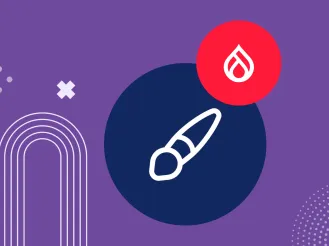Five Signs Your Website Needs a New Design
Standing out in a sea of internet sameness is tough. As your competitors launch new sites, it’s become urgent to stay on top with an engaging web presence. And if you’ve exhausted the quick fixes that can make an immediate improvement to your website, it may be time for a complete redesign. Many things may spur a redesign. Maybe your IT team is frustrated with never-ending content creation and demands from the communications department. Maybe it’s the communications people losing patience with IT because their requests continue to be bumped by the latest emergency. Or maybe your site was built five years ago, before responsive design became an industry standard, and before most of today’s other best practices were on anyone’s radar. And if that’s the case, your content and navigation no longer match the needs and expectations of today’s users. Regardless of the whys, a website overhaul is one of the biggest digital decisions a business can make. After years of working with businesses, our team wants to share five signs that it’s time for a redesign.
It’s Not Mobile Friendly
So you have a stunning, high-converting website? Perfect! But it’s not responsive, you don’t have a responsive content strategy, and -- surprise! -- half of your visitors access the site from mobile devices, which means they’re having a broken experience. Your mobile conversion rate is zero and you’re missing out on 50% of potential conversions. Not good! Mobile users are distracted, impatient, and goal-driven. If your site doesn’t cater to them, they’ll bounce. Have a peek at your mobile traffic bounce rate. A high number is a sign that it’s time to create a responsive digital experience for your visitors. The standard for any website design used to be to focus on the desktop experience and that mobile users would receive a separate, scaled-down experience as a secondary goal (and priority). This made sense when most of us had flip-phones and/or minimal data plans, but the ubiquity of smartphones has led to integrating the two versions in an effort to avoid duplicate administration and provide a more consistent experience.
Workflow and Governance is an Issue
Does your content management team feel like the copy and paste team? Does your marketing team have system hoops to jump through before they can publish new promotional content? Yes? Then it’s time to consider upgrading or migrating to a new content management system (CMS). If your content team is jammed up by your system, waiting to have their content approved by a single webmaster, then know this: workflow doesn’t have to be anxiety-inducing! There are tools that will do the work for you so your staff can focus on attracting, engaging, converting, and retaining customers. Not sure which CMS is right for your business? Choosing your CMS is as important as choosing the name of your business: it will influence every decision you make thereafter. The type of CMS you choose will affect the kind of website you build, how you make changes to your site, not to mention how frustrated or happy your marketing team will be. We recommend Drupal for most of the businesses we partner with. Read here to find out when it might be right for you.
Your Analytics Say So
Your website’s analytics are a mirror -- so what are they telling you? If you’re paying attention to the right ones -- your conversion rate, bounce rate, and traffic -- you’ll know when it’s time for a makeover. Your conversion rate is the best indicator of whether or not your website is hitting your goals. Is your site wooing audiences or repelling them? Take a look at your site’s performance by paying attention to leads and conversions. Are site visitors reaching your contact and conversion pages? Check out the path to conversion and see where the biggest drop-off is happening. You might be surprised to find specific content or pages are hurting your conversion rate. Your bounce rate will help answer the question, “Is our audience interested in and engaged with our content?” Bounce rate is the percentage of site visitors that leave after one page view. The lower the bounce rate the better. You can have a high bounce rate for a number of reasons, but the biggest ones are poor content, bad user experience, unclear messaging, and landing pages that a user wasn’t expecting. And your website’s traffic will tell you if you’re hitting your target numbers and demographics. Are you getting enough traffic to reach your lead generation goals? Is it the right traffic? Are they landing on the right page? If you’re not meeting your traffic goals, take a look at your metrics and start to ask why.
Your Website Wasn’t Designed with your Customers in Mind
You can create all of the killer content you want, but if you don’t know who your audience is, what problems your business can solve for them, and where and how they’re consuming your content, then you risk it missing the mark entirely and your website falling into the internet’s ether. Before you create any content, it’s important to understand who will be consuming it and why. You need to know your audience. Building a profile of your typical customer, both prospective and active, will help you to focus your content and better target your specific audience. These profiles are called personas. Delivering the types of content that your audience finds the most influential to consume helps to meet their needs. By relying on the personas you create, as well as tailoring the types of content you deliver and when, you can maximize your efforts and help them progress through to the next phase of their buying cycle -- and, ultimately, to convert them into customers.
Your Content Strategy is Outdated
Do any of the following scenarios sound familiar?
- You have a number of websites all built on different platforms and CMSs.
- Your content was migrated over from the last website without a content audit.
- Different departments are creating new websites without consistent quality assurance systems or branding guidelines.
As long as you continually create relevant and useful content and stay abreast of current trends and content marketing strategies, they will work together to contribute to your specific content marketing strategy and help build a trusting relationship between you and your audience. Traditional marketing methods of the past have become outdated as audiences have lost interest and become more savvy in tuning them out. From browser-based ad blockers to streaming content online, ads have been relegated to the periphery at best, leading to low conversion rates, decreased traffic, and a lower return on investment. To counter this, many businesses are choosing to implement more creative strategies that better engage their audiences. Delivering content that educates and informs your users will help to establish your company as an expert in your field, increasing your credibility and shortening your sales cycle. The most effective of these strategies is content marketing -- a targeted strategy that involves creating insightful, engaging, and compelling content with the goal of increasing audience loyalty to create opportunities to convert them to customers. But is your content marketing strategy up to date, or is it a holdover from years past? If your content marketing strategy is outdated or nonexistent, it may be time to revisit the basics along with your website redesign. Even the best-designed websites will eventually require a refresh. With the rapid pace of evolving web standards, you can expect to have to revisit your website’s design and content strategy every 3-5 years. So how does your website measure up today? Share this guide with your team to open up and the redesign conversation, then contact us to start the process.







